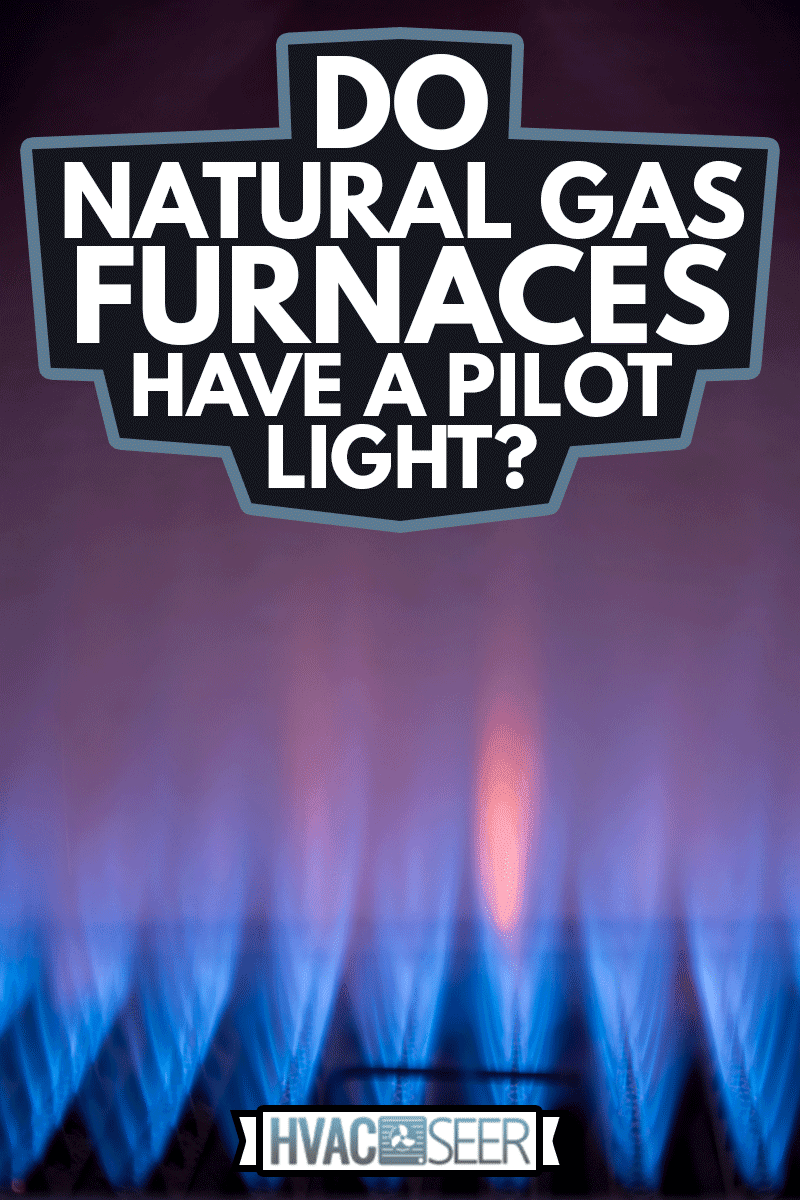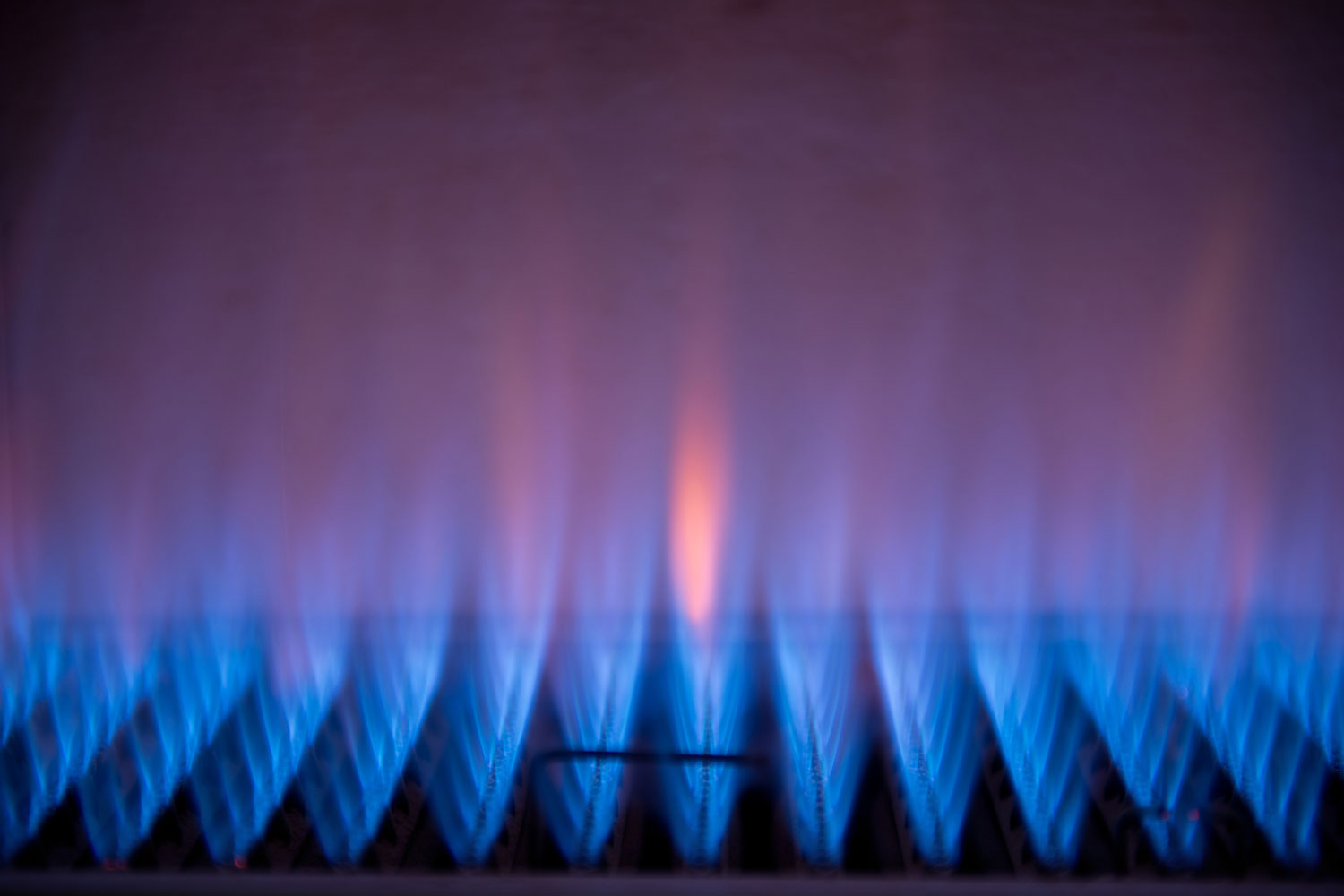When reading about gas furnaces, you'll often see the term "pilot light'' mentioned. The pilot light is the traditional ignition method used to ignite the heat exchanger in gas furnaces. But does every natural gas furnaces have a pilot light? We have researched the answers to this question, and in this post, we will go over them.
Most newer gas furnace models don't have the traditional pilot light that burns continuously. These systems come with an electric ignition system that includes either an intermittent pilot light or one lit via a hot surface ignitor instead of a pilot light.
Knowing how your furnace works is helpful when it's time to troubleshoot problems. The traditional pilot lights are becoming obsolete due to various issues they encountered—one of the main ones being having to relight the pilot. Continue reading to learn more about the newer pilot ignition systems on modern gas furnaces.

What Happened To Standing Pilots Lights?
There are a couple of reasons why traditional pilot lights aren't used as frequently.
They waste gas
Traditional pilot lights that burned 24/7 cost about an additional 4-5 therms every month. And this equates to about $45 per month, an extra gas bill cost.
The light can go out
Although every furnace brand and model is different, traditional pilot lights tend to go out at times. This can be caused by a dirty flame sensor, a draft near the furnace, or issues with the gas supply line.
However, with electronic ignition systems, these types of problems won't reveal themselves for many years down the road due—and that's if the unit has a pilot light at all.
How can I tell if my furnace has a pilot light?
If the unit has a pilot, you can find it in the control panel of the furnace. If you look at the area inside the control panel, you should see the pilot light right in front of the heat exchanger
. To access your control panel, unscrew the front panel to the furnace and slide it up and away from the unit. The furnace should have a round knob near the gas ball valve with "On," "Off," and "Pilot" selections. This is known as a standing pilot ignition gas furnace.

What happens if your furnace doesn't have a pilot light?
Though standing pilot (aka "constant flame") heating systems are still pretty common in homes today, many newer systems are making their way into the market. These new furnaces don't have a traditional pilot light that burns all the time, making it pretty confusing if you have never owned one before.
If you start to experience issues with the heating unit and happen to access the control panel only to find that there is no pilot light, the chances are that you have an electronic ignition system. It's best to check your manual to confirm that this is the case before attempting to troubleshoot any malfunctions.
There will be an ignition rest switch on most electronic systems if there is not a pilot light. Let's talk a bit more about both types of electronic ignition systems.
Intermittent Pilot Furnaces
The intermittent pilot is probably the most common type of new model furnace. With this type of furnace, the pilot light does not stay on all the time. Instead, the light only burns during the ignition process. So instead of 24/7 gas usage, it only uses gas for a few seconds to create a spark for the heat exchanger.
When the home thermostat gets to a specific temperature, it sends a signal to the furnace for heat. After that, the pilot will automatically create a spark, activating the burners on the heat exchanger. Once they're activated, the pilot will automatically shut off, and the ignition for the heat cycle is complete.
This method allows the pilot to use less fuel, and the overall energy used is minimized.
Hot Surface Ignitor Furnaces
The second type of electric ignition furnace is one with a hot surface ignitor. This type of furnace has no pilot light but works very similarly to a typical light bulb.
The heat cycle process goes something like this: the thermostat will reach a lower temperature per its current setting. However, instead of the pilot light igniting a flame, an electronic current is transferred from the ignitor to the bulb-like heating surface.
Once this happens, the gas valve opens up, and he begins to build up around the burner. Next, the burner activates the ignitor when it reaches a specific temperature, and the heat exchanger kicks on.
How do you light a natural gas furnace?

The best thing to do before attempting to light your natural gas furnace for the first time is to take a look at your user's manual. It will instruct you on exactly how to access the pilot light and light it safely. It'll also advise on safety precautions to take. Every gas furnace brand and model is different. However, here is a general overview of how to light most pilot lights on these types of furnaces.
Steps to relight a natural gas furnace
- Start by unscrewing the front panel to the furnace. To do this, take a screwdriver or a pocket knife and unscrew the side screws. Next, lift the front panel up and slide it off the unit.
- You should see the pilot light knob in the front on the left or right side of the unit. Start by turning the valve to the "Off" position and then wait about 3 to 5 minutes for any remaining gas around her unit to completely dissipate. Make sure that the valve is in the "Off" position by attempting to turn it again. If it is in position, you should not be able to turn the knob at all. This step is crucial to ensuring that the gas is completely off to avoid a possible explosion.
- Next, switch the valve to the setting marked "Pilot." You'll need to press the valve and turn it to select the setting. This step will require a bit of coordination as, at the same time, you'll need to take your electric lighter and physically light the pilot sensor.
- Hold the lighter to the pilot opening until the flame is lit and burning brightly. After it burns for about 5 minutes, press and turns the knob to the "On" position.
Next, power on the furnace to see if the heat exchanger kicks on. If it does, you're good to go. There may be an issue with the gas valve, blower motor, or heat exchanger if it doesn't.
In this case, you may need to contact an HVAC technician.
Does gas still flow when the pilot light goes out?
It depends on if the furnace's pilot knob is in the "On" or "Pilot" position. In which case, the gas will continue to flow. However, if it's in the "Off" position, the gas should not be flowing. If it does, the chances are that the thermocouple is faulty and should be replaced as soon as possible—this is a serious safety hazard.
How do you reset a gas furnace?
There are a couple of ways that you can reset a gas furnace. Some furnaces come with a reset button that you can press to reset the unit within a few seconds. However, some furnace units will retire you to turn the entire system off and reset it at the circuit breaker.
How much does it cost to relight a pilot light?
A pilot relight itself shouldn't be that expensive. It can range anywhere from $50 to $100 or more. The reason is that this is a relatively quick process in many cases.
However, if there are underlying issues with the furnace, the cost may be higher. This usually happens if there are repairs needed for the pilot to function correctly. Here are a few common reasons why the pilot light may go out.
Bad thermocouple
The thermocouple detects the flame from the pilot to like the heat exchanger. If it's dirty or broken, the furnace will not power on to produce heat. You can replace and clean a thermocouple yourself, so this is a pretty easy fix.
Gas Supply Issues
Sometimes gas valves can become stuck or clogged with debris. In turn, this will hinder the ability of the gas to reach the pilot sensor. In turn, the pilot light won't stay lit. The valve will need to be replaced with a new one to resolve the issue.
Wrapping things Up
We hope this post has helped you understand the differences between gas furnaces with pilot lights and ones without them. Remember to always check your user's manual before attempting to light the pilot light on your own.
Before you go, be sure to check out some of our other posts:
